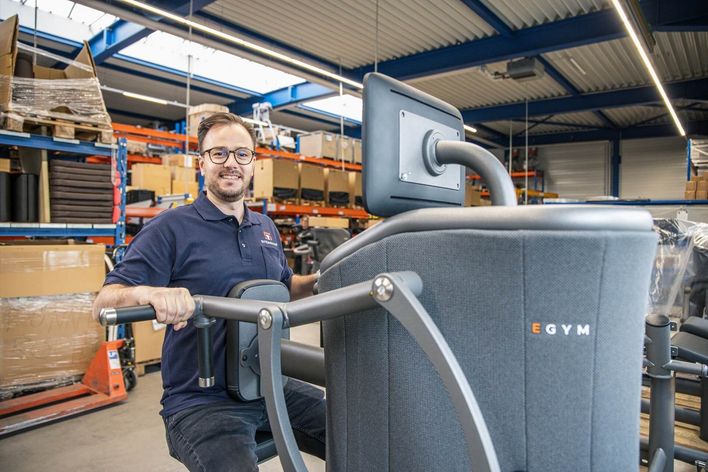The Ukrainian civilian is standing directly at the front. There is destruction all around him: no houses, no shelters. And it is bitterly cold. He has just learned that field stoves will soon be delivered. They can be fueled with wood and have room for a cooking pot to heat water or food. He is grateful to the team from "Helping Hands", an aid organization, and he is looking forward to a little warmth in these cold days.
Things have to happen quickly
The idea of delivering stoves to Ukraine comes from Heiner Meiners and Markus Vähning from the aid organization "Helping Hands" in Lathen in Emsland. They had experienced the unbearable situation of the people on the ground and it was clear to them that fast help was needed. They recruit donors who would like to support their project financially and then contact Michael Kuipers, Managing Director of KUIPERS technologies GmbH, based in neighboring Meppen. His company specializes in the series production of assemblies and supplies international customers in a number of different industries. "Of course, we immediately agreed to provide our support," Kuipers recounted. "That said, the tight deadline – the design and production of 760 stoves in just under three weeks - was a huge challenge from the onset. On the other hand, our automated production offers the best conditions for this kind of project at its record speed." There is also support from the KUIPERS workforce: the employees are happy to work overtime for this relief effort.
Automation sets the pace
First, Karsten Hanenkamp, Operations Manager at KUIPERS, sat down with his colleagues from the Design Department. "The specification was that the stove should provide sufficient heating capacity and be quite easy to assemble," he said. What’s more, the field stove had to be easy to transport and not too heavy - in other words, a whole host of requirements. It was also clear that "due to the tight schedule, only automated production of all the parts was an option," said Hanenkamp.
A fortunate coincidence was that the new TruBend Center 7020 panel bender from TRUMPF had just recently been put into operation at KUIPERS. "We wanted to produce as large a firebox as possible for our stove, and of course we wanted to do it automatically. This is not feasible with a conventional bending machine. Only the TruBend Center 7020 is capable of doing this," explained Hanenkamp, and Michael Kuipers added, "We took full advantage of the machine's potential and estimated a diameter of 333 millimeters for the firing chamber. A whole lot of wood fits in there then." The loading and unloading robot connected to the TruBend Center 7020 also saves time: its grippers stack the finished bent parts directly onto pallets, which then go to the welding shop for further processing.
Simple and ingenious
Within just 48 hours, the designers developed and built a prototype of the stove. "We fired it up to make sure nothing warped," said Michael Kuipers. "And after a few touch-ups, it went straight into production."
The field stove consists of a total of 22 parts. To assemble the individual parts, the designers gave the stove door handle an ingenious secondary function: It functions as a wrench that can be used to fasten the few screws that hold the stove parts together. Illustrated assembly instructions make assembly a breeze. "All the individual parts lie in the sealed firebox to form a set that can be easily transported with the help of two attached carrying handles," said Kuipers.
Perhaps just the beginning
With a lot of dedication and automated machinery, the team at KUIPERS met the challenging deadline and produced 760 field stoves in just over three weeks. "When they're sitting in our yard like this now, it looks like a lot. But we are well aware that in view of the many freezing people in Ukraine, they are just a drop in the bucket," said Michael Kuipers. At the end of January, Helping Hands will bring the stoves on trucks to the war zone. And Kuipers is certain that he and his team will produce more stoves if donors can be found to contribute financially to the project.










